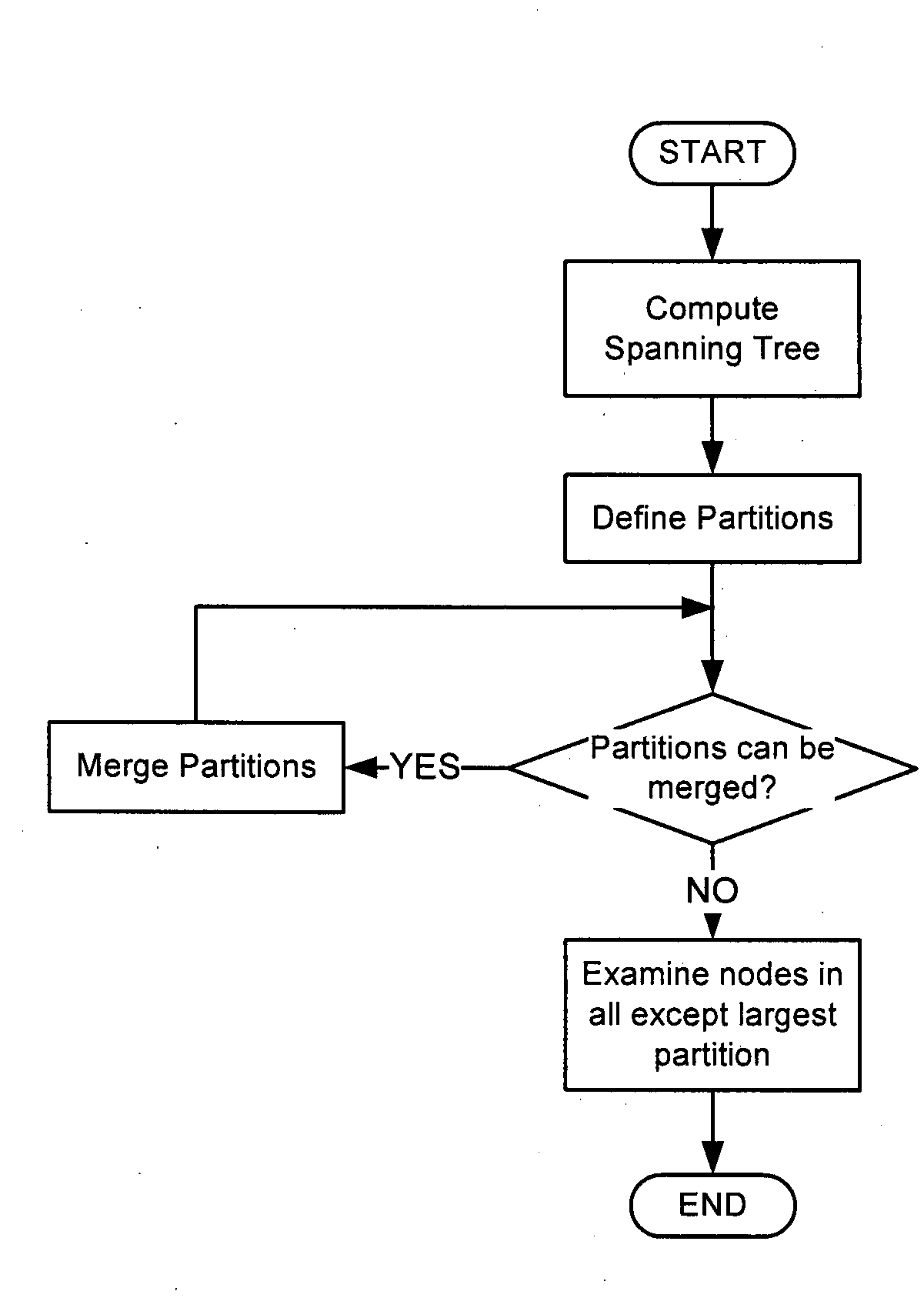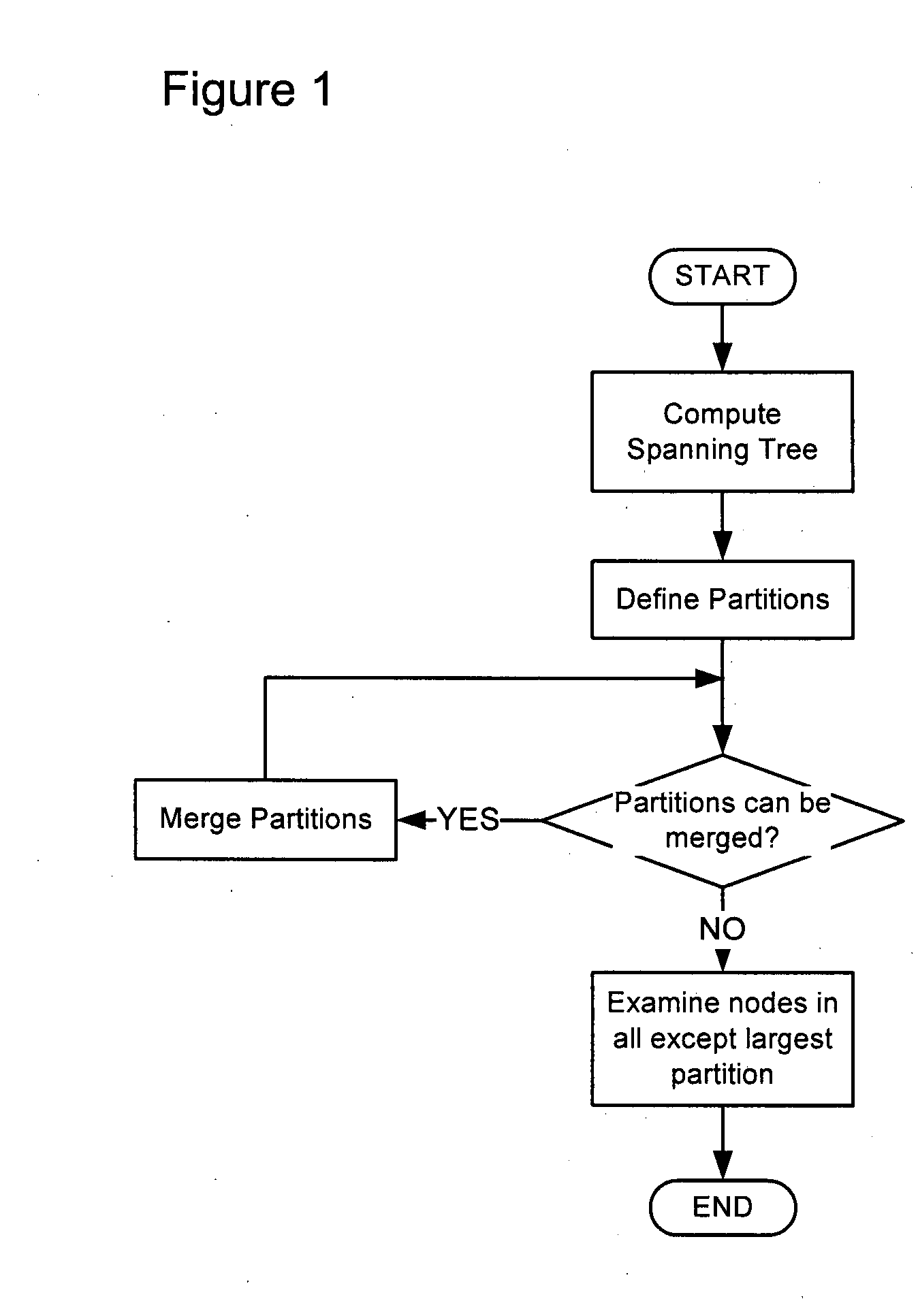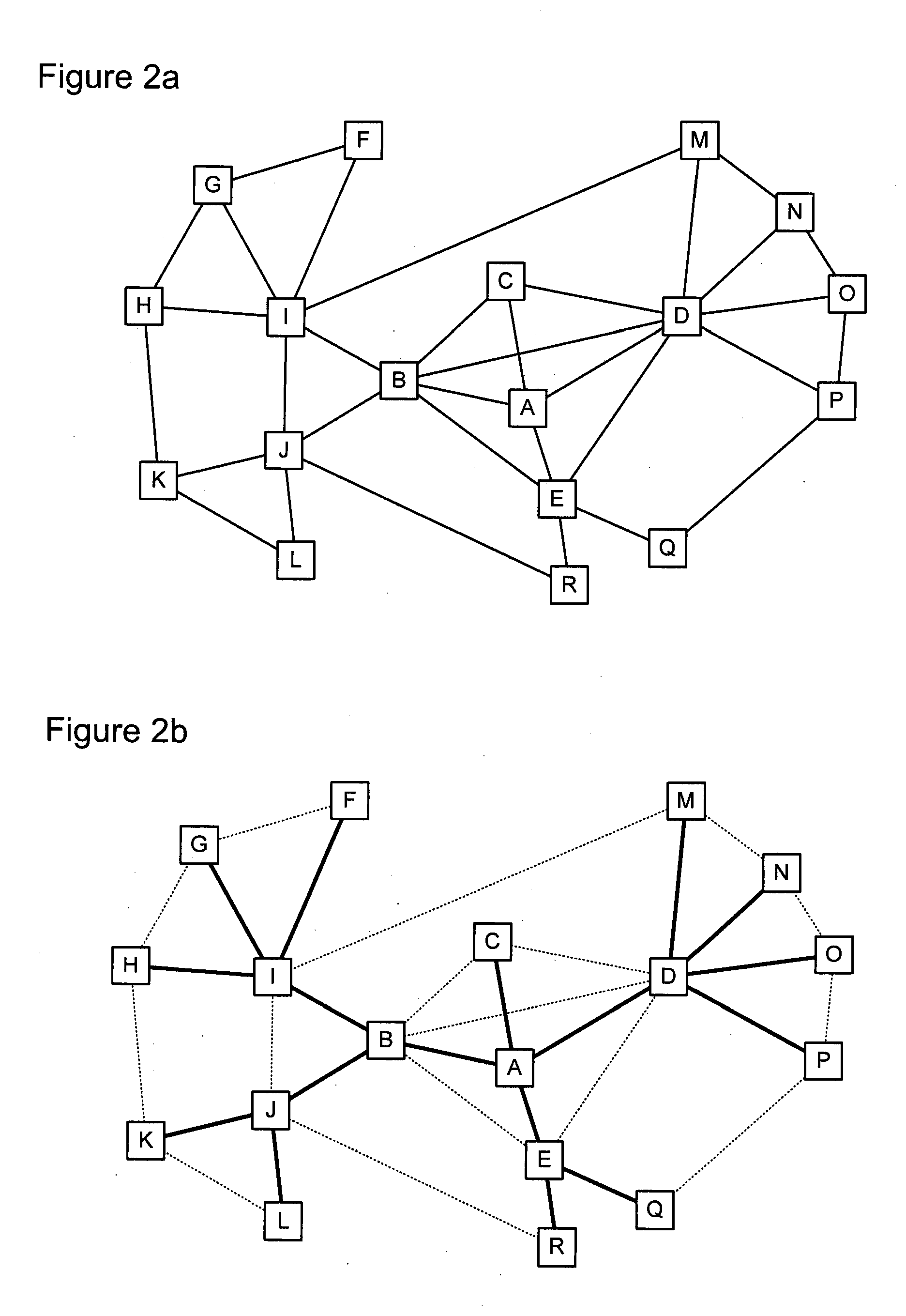Provider link state bridging (PLSB) computation method
a technology of provider link and computation method, applied in the field of traffic forwarding in packet networks, can solve the problems of imposing limitations on the size of the network, identifying pairs of nodes, and computationally intensive traversing a particular nod
- Summary
- Abstract
- Description
- Claims
- Application Information
AI Technical Summary
Problems solved by technology
Method used
Image
Examples
Embodiment Construction
[0017]The present invention provides a PLSB computation method in which the number of nodes that must be examined, in order to find all of the node pairs for which the respective shortest path traverses a given node, is minimized. In some cases, the number of nodes that must be examined can be reduced to zero. Embodiments of the invention are described below, by way of example only, with reference to FIGS. 1-2e.
[0018]As an initial matter, it should be noted that the method of the present invention is valid for networks in which computed shortest paths are symmetric (that is, the network can be represented as an undirected graph) and, if two or more equal-cost paths can be computed between any two nodes, a tie-breaking method must be implemented which will select one of the equal-cost paths in such a way that the selected “shortest” paths are symmetric and locally consistent. In this respect, “locally consistent” means that any sub-path of the equal-cost path selected by the tie-bre...
PUM
 Login to View More
Login to View More Abstract
Description
Claims
Application Information
 Login to View More
Login to View More - R&D
- Intellectual Property
- Life Sciences
- Materials
- Tech Scout
- Unparalleled Data Quality
- Higher Quality Content
- 60% Fewer Hallucinations
Browse by: Latest US Patents, China's latest patents, Technical Efficacy Thesaurus, Application Domain, Technology Topic, Popular Technical Reports.
© 2025 PatSnap. All rights reserved.Legal|Privacy policy|Modern Slavery Act Transparency Statement|Sitemap|About US| Contact US: help@patsnap.com



